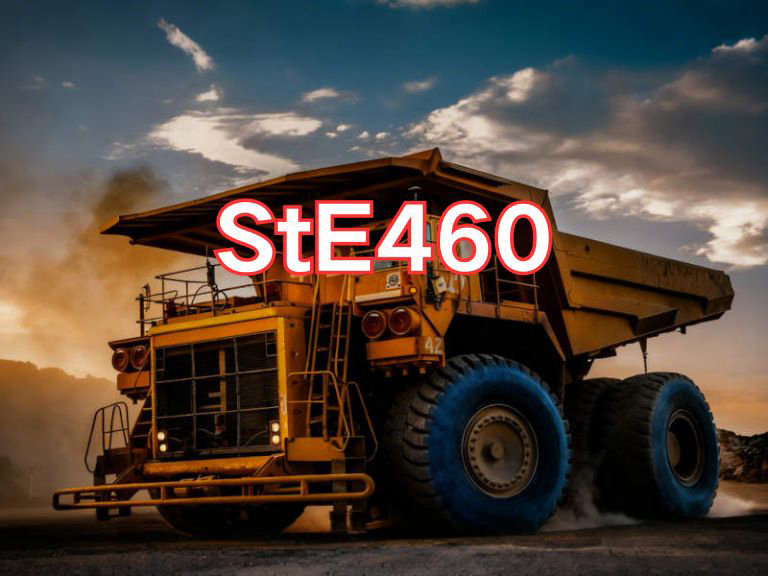

S355M
S355M is a high-strength, fine-grain structural steel, with its designation following the European standard EN 10025-4 naming system. In this system, "S" stands for "Structural steel," indicating it is designed for load-bearing and engineering applications; "355" refers to the specified minimum yield strength of 355 MPa at room temperature; and the letter "M" denotes the delivery condition as "Thermomechanically Rolled." This means the steel is produced using a Thermo-Mechanical Control Process (TMCP), which involves precise control of rolling temperatures, reduction rates, and cooling speeds. This advanced manufacturing technique achieves grain refinement and microstructural strengthening without requiring additional heat treatment, resulting in excellent overall mechanical properties. Therefore, S355M is a weldable structural steel with a fine-grained structure and superior strength-toughness balance, produced through thermomechanical rolling.
The main characteristics of S355M steel plate include high strength, good low-temperature toughness, and outstanding weldability. Thanks to the TMCP process, its microstructure consists of fine ferrite and bainite grains, significantly refined to enhance both strength and toughness. It maintains reliable impact resistance even at -20°C, typically meeting the minimum Charpy V-notch impact energy requirement of 27 J. Its tensile strength generally ranges from 490 to 630 MPa, with good elongation, high fatigue strength, and strong resistance to dynamic loading. The steel has a low carbon equivalent (CEV), ensuring excellent weldability compatible with various welding methods such as MAG, SAW, and FCAW. Welded joints are stable and high-quality, usually requiring no preheating or only minimal preheating, making it ideal for automated welding and on-site assembly of large-scale structures. Additionally, S355M offers good cold-forming capabilities, suitable for bending, stamping, and other complex fabrication processes.
S355M is widely used in engineering fields where high strength, toughness, and weldability are critical, including heavy lifting equipment, large building structures, bridges, industrial facilities, construction machinery, railway vehicles, offshore platforms, and wind turbine towers. It is particularly suitable for applications requiring reduced structural weight, enhanced load capacity, and reliable performance in demanding service environments.
The current standard for S355M steel plate is EN 10025-4:2019, titled Hot Rolled Products of Structural Steels – Part 4: Technical Delivery Conditions for Thermomechanically Rolled Weldable Fine Grain Structural Steels. Published in 2019, this version supersedes EN 10025-4:2004 and serves as the authoritative international specification. It specifies detailed requirements for chemical composition, mechanical properties, TMCP process parameters, impact testing at -20°C, and inspection procedures. As a representative material of modern high-efficiency manufacturing, S355M combines high performance with production efficiency, playing a vital role in advanced equipment manufacturing and major infrastructure projects, and serving as an ideal choice for sustainable structural design.

Ultrasonic Testing (UT)
A key non-destructive testing technique that uses high-frequency sound waves to detect internal flaws in steel plates. The probe emits sound waves, which reflect when encountering defects such as cracks or inclusions. The receiver captures the echoes, enabling precise determination of defect location and size. With high sensitivity, strong penetration, and fast inspection speed, UT effectively ensures internal quality, widely used in the production of heavy plates, pressure vessel plates, and other high-end products to guarantee safety and reliability.

Magnetic Particle Testing (MT)
A common surface inspection method that magnetizes the workpiece, causing leakage magnetic fields at surface or near-surface defects like cracks or inclusions, which attract magnetic particles to form visible indications. Simple to operate and highly sensitive, MT is suitable for rapid inspection of surface and near-surface flaws in ferromagnetic materials, widely used for online or offline inspection of plate edges, ends, and welds, ensuring product quality and safety.

Penetrant Testing (PT)
A non-destructive method for detecting surface-breaking flaws. A penetrant liquid is applied to the cleaned steel surface, allowing it to seep into defects such as cracks or pores. After removing excess penetrant, a developer is applied, causing the trapped penetrant to bleed out and form visible indications. Simple and cost-effective, PT is suitable for inspecting surface defects in various non-porous materials, commonly used for welds, castings, and complex components, effectively ensuring surface quality of steel plates.











